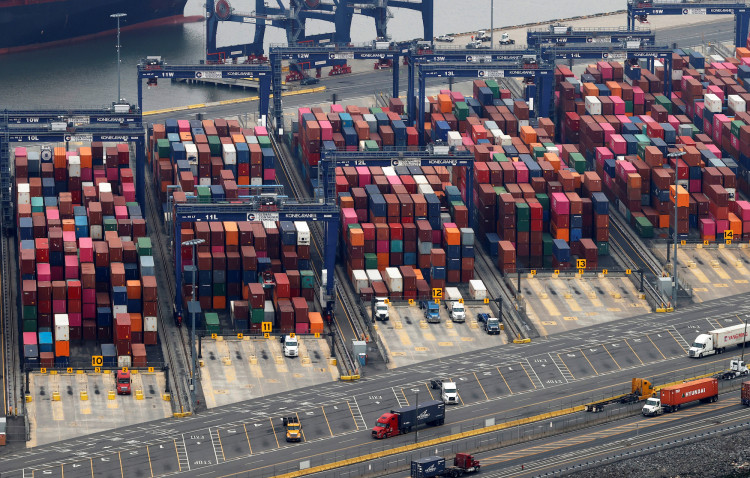China's trade surplus was $45.53 billion in May compared with a surplus of $61.9 billion a year ago thanks to improving world demand and higher commodity prices, according to the General Administration of Customs Monday.
Headline trade growth remained elevated last month. But trade volumes dropped back in level terms and, while supply constraints are partly to blame, there are signs that demand may be peaking, too, according to Capital Economics.
A market consensus had predicted a surplus of $50.5 billion.
Exports rose 27.9% year over year from a 32.3% jump in April and below a market consensus of 32.1% growth. It was the 11th consecutive month of an increase in exports - once again as a result of improving international demand and higher commodity prices, Customs said.
Imports jumped 51.1% on year to $218.39 billion compared with market consensus of a 51.5% rise and after a 43.1% rise a month earlier. "This was the steepest increase in inbound shipments since January 2011, amid strengthening domestic demand and surging commodity prices."
"Base effects were modest and most of the decline was due to a contraction in export values last month, by 2.8% in seasonally adjusted month-over-month terms. The breakdown shows a broad-based decline across all good types last month. Electronic exports continued to drop back - which partly reflects worsening supply constraints caused by the global shortage of semiconductors. But there are also signs that demand may be levelling off. Exports of other consumer goods which benefited from the pandemic, such as furniture and toys, also softened last month.
"We think that trade volumes, which are now well above their previrus trend, will drop back over the coming quarters. Admittedly, supply constraints should start to ease later this year. But the pandemic-induced surge in demand for Chinese exports appears to be losing momentum and should reverse as global consumption patterns normalise on the back of vaccine rollouts and easing social distancing restrictions. Meanwhile, the recent pullback in credit growth suggests that import volumes are likely to drop back as the composition of output shifts toward services and away from stimulus-dependent sectors like industry and construction," according to Capital Economics senior China economist Julian Evans-Pritchard.
"It's still a fairly healthy set of numbers," Jonathan Cavenagh, senior market strategist at Informa Global Markets, said in an interview with Bloomberg TV. "We know that global demand is still recovering and that trend is likely to continue toward the end of the second quarter and into the third quarter as the major developed economies open up."
A resurgence in COVID cases in India and Southeast Asia has disrupted production in those countries, possibly driving more export orders to China. It has also fueled demand from those countries for China-made medical goods, like personal protective equipment, according to Citigroup Inc.
China's exports will keep up their good momentum in the first half of the year, Gao Feng, a spokesman for the Ministry of Commerce, said.
The "trade surplus may still be wide in coming months as exports remain strong," said Peiqian Liu, an economist at Natwest Group Plc. "We expect external sector out-performance to remain the key theme of recovery into the second half of 2021."






